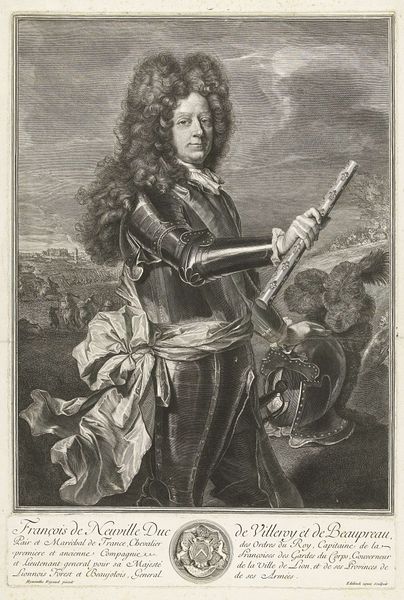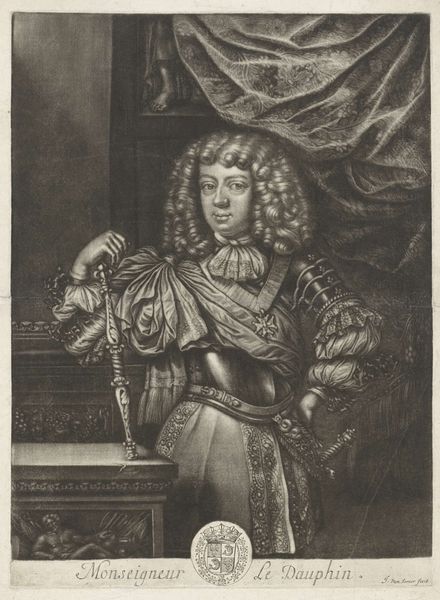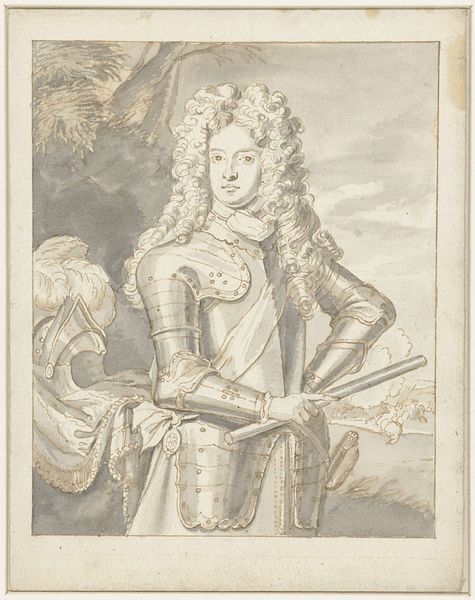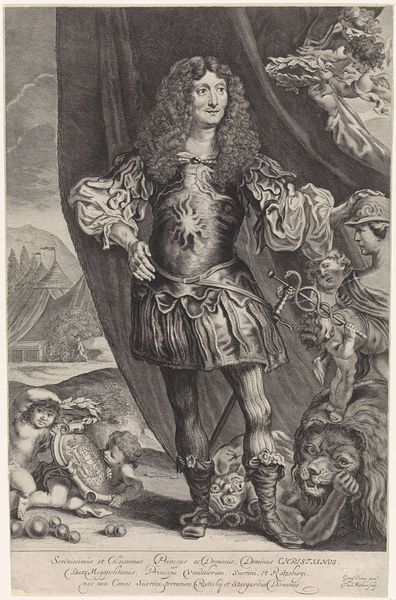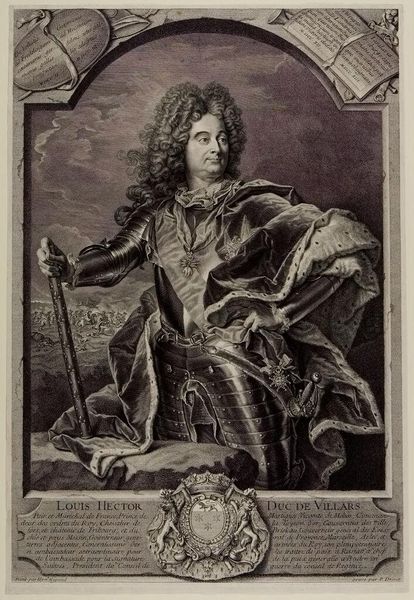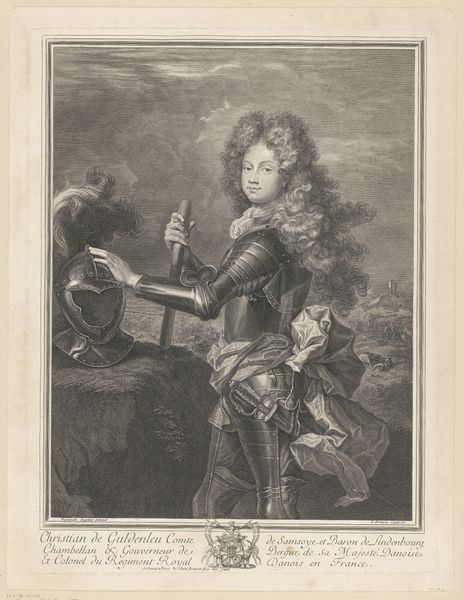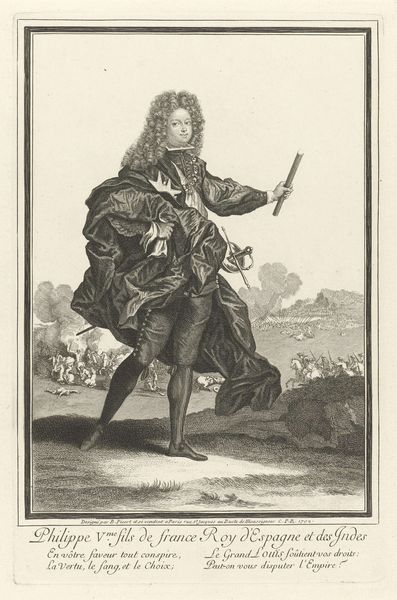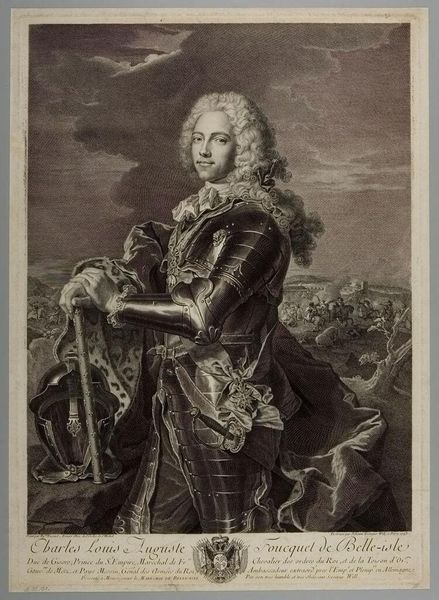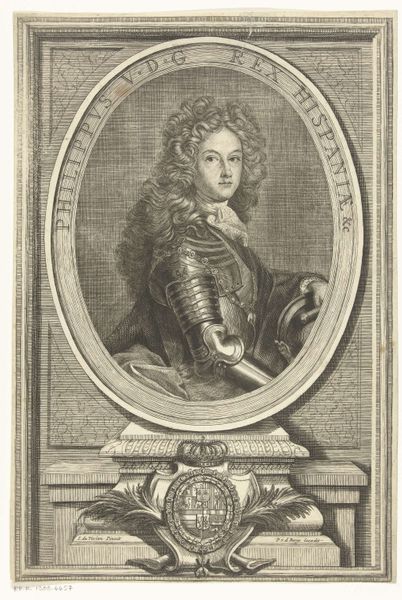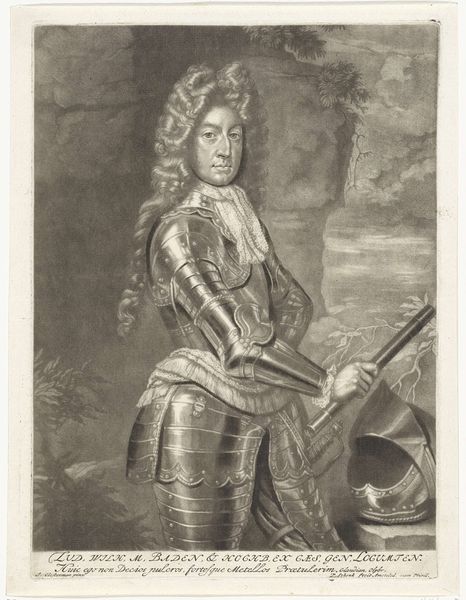
engraving
#
portrait
#
baroque
#
history-painting
#
engraving
Dimensions: height 245 mm, width 177 mm
Copyright: Rijks Museum: Open Domain
Curator: Let’s have a closer look at this portrait, an engraving dating from the period between 1691 and 1713, now residing at the Rijksmuseum. The artist is Pieter Schenk, and it depicts Friedrich von Hessen-Kassel. Editor: Immediately, I'm struck by the tension between the subject’s vulnerability and the ostentatious display of power. That impossibly large wig, the gleaming armor... all rendered with meticulous detail. Curator: The armour and wig indeed serve as symbols of status and the theatricality that were fashionable for this type of portrayal, which links to its Baroque style. The way he's posed, with his hand resting almost casually on the helmet, evokes a sense of thoughtful command. Editor: Command certainly crafted! It’s remarkable how Schenk translated the textures of metal, hair, and fabric into a printed image. Think about the process. This wasn't simply capturing a likeness; it was about manipulating line and tone through the physical act of engraving to project the sitter’s status. Curator: And that status is closely associated with the historical background implied here. Behind him, we see what could be a depiction of the Hessen-Kassel castle and grounds, alluding to his heritage and future. It speaks volumes about dynasty, succession, and legacy. Editor: It makes you wonder about the social consumption of this portrait. Prints were more easily distributed than paintings, right? Curator: Precisely! It helped disseminate the image of the prince far and wide, both cementing and perpetuating his authority, identity, and image across the Hessen-Kassel territories. Editor: To look closely at the engraving itself highlights Schenk's skilled labour, creating a powerful visual commodity which promoted the image of nobility. The combination of process and image is just fascinating! Curator: Absolutely, and Schenk has ensured that the visual impact is long-lasting! It invites contemplation not just on individual identity but also on the enduring legacy of symbols across history. Editor: Considering the production process reminds me that the power embodied here goes far beyond this single individual depicted, touching everyone involved with this portrait's making and use. Curator: That's very well put, making us think not just about the man portrayed, but the mechanics of power embedded in cultural imagery. Editor: Indeed. From the printmaker's workshop to the palaces it adorned.
Comments
No comments
Be the first to comment and join the conversation on the ultimate creative platform.

